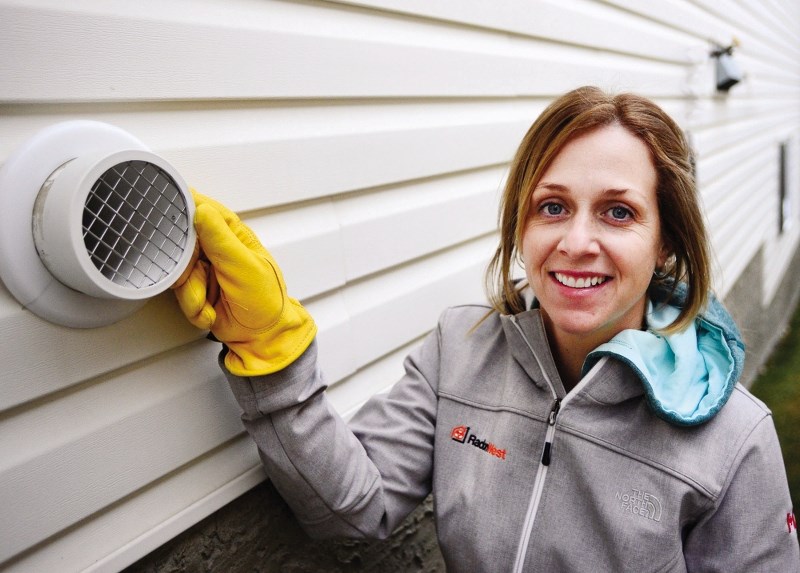It would seem that the odourless, tasteless and colourless gas – otherwise known as radon — is making its way onto the radar of Canadians.
Long-term exposure to high levels of radon remains the second leading cause of lung cancer in Canada (the first being smoking); smokers exposed to high levels of radon are even more at risk for developing lung cancer (from one in 20 to one in three).
What many still don’t realize is that it’s easy and affordable to test and relatively affordable to mitigate (around $1,800-$3,000).
You can never get rid of radon — which is only harmful when concentrated in levels above 200 Bq/m3 inside your home — but you can ventilate it and substantially reduce your risk of getting lung cancer.
Kelley Bush, head of radon awareness and education at Health Canada, said that their 2013 followup to their 2007 baseline public opinion study revealed a 15 per cent overall increase in awareness; a 20 per cent awareness of the availability and affordability of radon testing kits; but only a four to six per cent increase in actual testing.
“There’s a long way to go from awareness to getting people to actually testing for it,” said Bush, adding that people tend to respond to immediate dangers or dangers they can ‘blame’ on someone or something.
“Radon — it’s nobody’s fault because it’s naturally occurring and it’s not immediate…it can take (up to) decades of exposure,” she said.
According to Bush, over 3,000 lung cancer deaths each year can be attributed to long-term exposure to high levels of radon.
Whereas Health Canada recommends levels below 200 Bq/m3 in your home as acceptable, the World Health Organization advises levels below 100 Bq/m3 as ideal.
While the National Building Code was changed in 2010 to include a mandatory rough in for radon mitigation systems (this makes it more affordable and easy to install a mitigation system, should the home test high) Alberta has yet to adopt the code.
Provinces such as B.C. and Quebec have become very proactive with changing their provincial building codes to accommodate radon mitigation systems.
Quebec recently made it mandatory for all schools to test for radon.
Health Canada will be working hard with provinces to encourage testing in schools and public buildings, while continuing awareness campaigns to see that testing and mitigation of homes that test high for radon continues to increase.
As the second annual ‘Radon Action Month’ wraps up, the Eagle reconnected with Renata MacQueen from local company RadonWest.
The full service company is one of four licensed radon mitigation companies in the province — and only three of these companies provide residential mitigation services; their services also include short and long-term testing (C-NRPP certified).
RadonWest is currently preparing to run programs to train homebuilders to correctly install rough-in radon mitigation systems for the eventual adoption of the National Building Code requirements; this could be as early as 2015.
“Alberta has the highest level of geological potential (from glacial till),” explained MacQueen. “This is not a Cochrane issue — it’s an Alberta issue.”
According to Bush, Health Canada conducted a nationwide project between 2009-2011 where some 14,000 homes were tested for radon.
An average of seven per cent of homes in Canada tested high for radon; in Alberta the average jumps up to 8.1 per cent.
Bush said follow-up studies to see if those homeowners chose to mitigation would be conducted.
MacQueen’s own Cochrane home tested at a staggering 2,491 Bq/m3. Her sister and business partner, Karin Dumais, also tested high, 322 Bq/m3, in her Okotoks home.
This prompted the sisters to mitigate their homes and get to work on what would become RadonWest, established around two years ago.
“The radon issue in Alberta is not going away…but it’s an easy thing to test for and to fix,” she said, adding that her company has had 100 per cent success in mitigating homes.
Health Canada recommends people purchase a long-term (91-day) radon test kit. The kit can be purchased through RadonWest or at other retailers and the cost is $45, including lab fees. Other short-term testing options are available.
The Southern Alberta Cancer Research Institute and the Alberta Lung Association are working with companies such as RadonWest to gather data from Alberta homes testing for radon.
Testing should be done at the lowest level of the home.
To learn more, visit radonwest.com.




